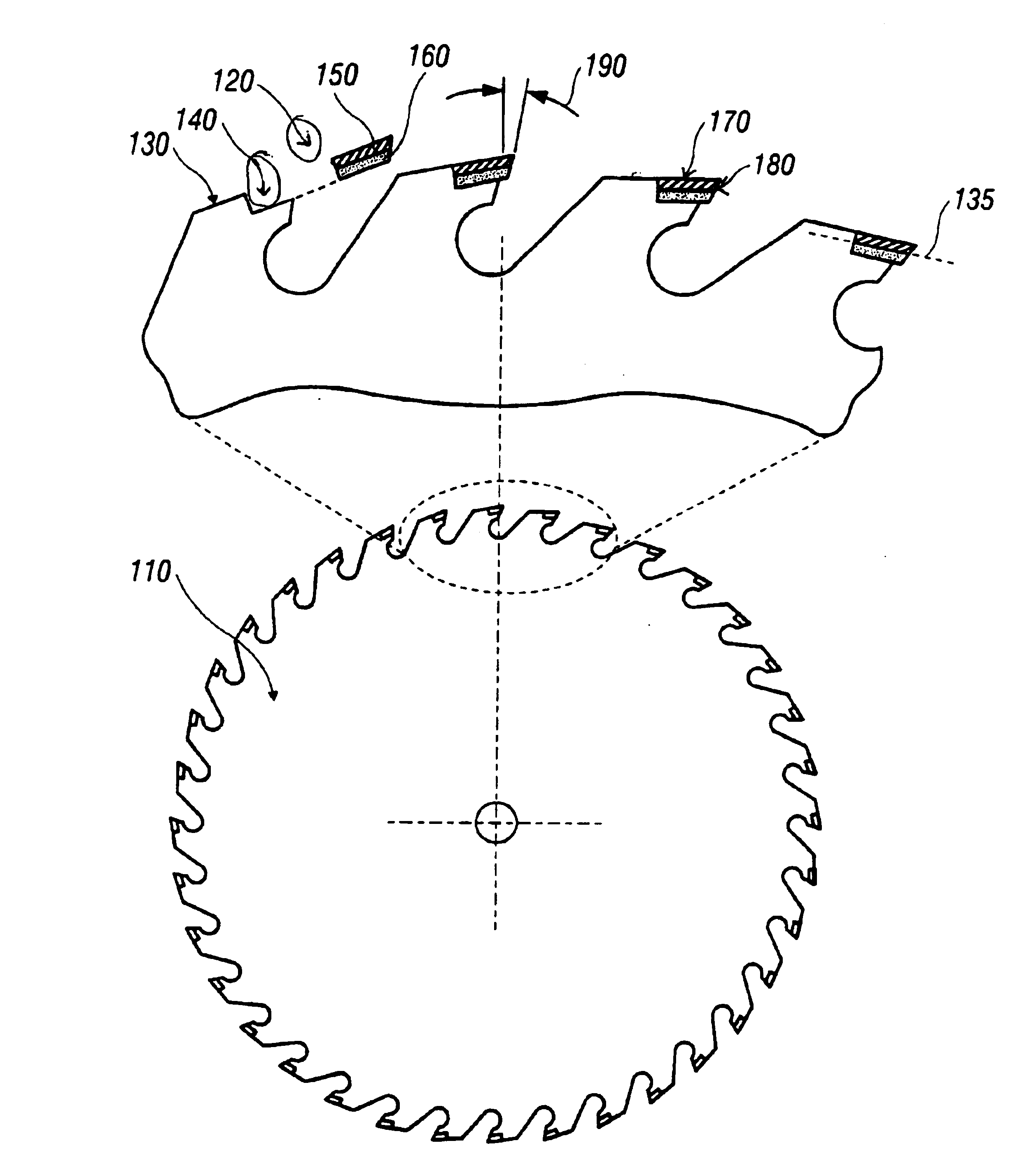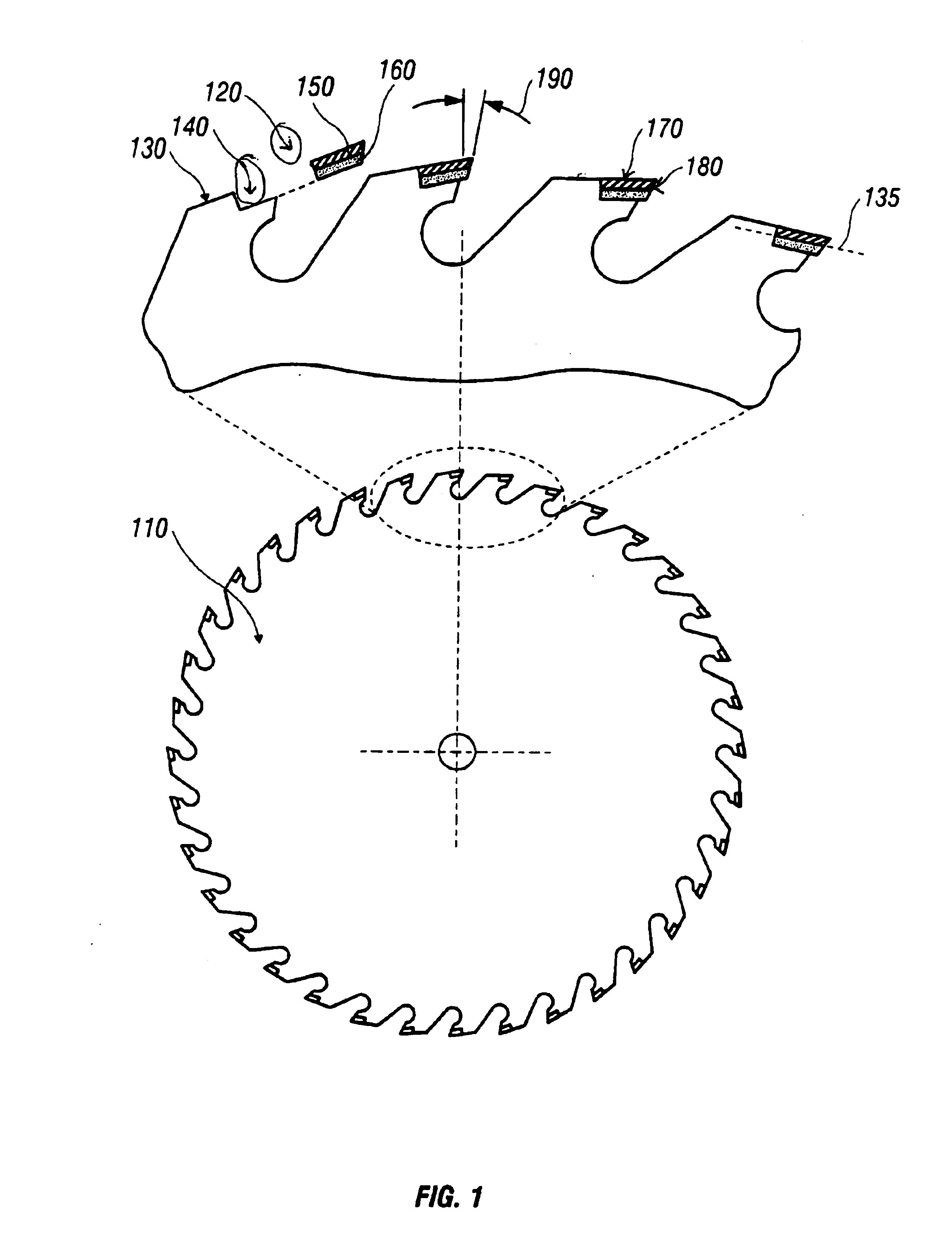Method of fabricating circular saw blades with cutting teeth composed of ultrahard tool material
a technology of cutting teeth and tool materials, applied in the field of circular saws, can solve the problems of steel blades, relatively quick dullness, and the same limitations of tooth pitch, and achieve the effects of reducing the stress on the braze joint, and increasing the rigidity of the cutter tip
- Summary
- Abstract
- Description
- Claims
- Application Information
AI Technical Summary
Benefits of technology
Problems solved by technology
Method used
Image
Examples
Embodiment Construction
[0042]The numerous innovative teachings of the present application will be described with particular reference to the presently preferred embodiment (by way of example, and not of limitation).
Definitions:
[0043]Following are short definitions of the usual meanings of some of the technical terms which are used in the present application. (However, those of ordinary skill will recognize whether the context requires a different meaning.) Additional definitions can be found in the standard technical dictionaries and journals.[0044]Braze: to solder with brass or other hard alloy.[0045]Carrier Blade: a blade, typically made of steel, to which a cutting tip is attached.[0046]Carbide: a material more commonly referred to as cemented carbide which typically includes small grains of tungsten carbide bonded into a matrix at high temperatures and pressure by another metal which is typically cobalt. The name cemented carbide comes from the fact the both the strength and hardness of the substance ...
PUM
| Property | Measurement | Unit |
|---|---|---|
| Angle | aaaaa | aaaaa |
| Force | aaaaa | aaaaa |
| Mass | aaaaa | aaaaa |
Abstract
Description
Claims
Application Information
 Login to View More
Login to View More - R&D
- Intellectual Property
- Life Sciences
- Materials
- Tech Scout
- Unparalleled Data Quality
- Higher Quality Content
- 60% Fewer Hallucinations
Browse by: Latest US Patents, China's latest patents, Technical Efficacy Thesaurus, Application Domain, Technology Topic, Popular Technical Reports.
© 2025 PatSnap. All rights reserved.Legal|Privacy policy|Modern Slavery Act Transparency Statement|Sitemap|About US| Contact US: help@patsnap.com



